- Online car rental since 2005

Car Rental Canada
Save time and money. We compare the offers of car rental companies in Canada on your behalf.
- Free cancellation Up to 48 hours prior to the scheduled pick-up time
- Best price guarantee Have you found a better price? Let us know and we will make you a better offer.
- 24000+ pick-up locations Locations around the world

Car Rental Canada
EasyTerra Car Rental Canada is an independent car rental comparison site. Our site compares prices from well-known car rental companies so that, as a customer, you can always reserve your car with us at a competitive rate.
Car rental offers in Canada
Whether you're looking for a small rental car or a station wagon for the entire family, we will always have a suitable vehicle at the lowest price. Below are some examples from our selection in Canada.

-
Thrifty From€ 29 /day -
Dollar Rent a Car From€ 29 /day -
Hertz From€ 36 /day

-
Dollar Rent a Car From€ 35 /day -
Thrifty From€ 35 /day -
Hertz From€ 55 /day

-
Avis From€ 43 /day -
Budget From€ 52 /day -
National Car Rental From€ 53 /day

-
Alamo From€ 42 /day -
Budget From€ 64 /day -
National Car Rental From€ 79 /day

-
Europcar From€ 63 /day

-
Sixt From€ 67 /day -
Alamo From€ 78 /day -
National Car Rental From€ 87 /day

-
Alamo From€ 83 /day -
National Car Rental From€ 97 /day

-
Europcar From€ 86 /day

-
Green Motion From€ 91 /day

-
Routes From€ 12 /day

-
Green Motion From€ 13 /day -
Alamo From€ 24 /day -
National Car Rental From€ 25 /day

-
Dollar Rent a Car From€ 24 /day -
Thrifty From€ 24 /day -
Hertz From€ 24 /day

-
Hertz From€ 19 /day -
Dollar Rent a Car From€ 20 /day -
Thrifty From€ 20 /day

-
Alamo From€ 27 /day -
National Car Rental From€ 29 /day -
Green Motion From€ 37 /day

-
Budget From€ 26 /day -
Avis From€ 26 /day

-
Sixt From€ 29 /day

-
Sixt From€ 28 /day -
Budget From€ 34 /day

-
Budget From€ 34 /day -
Avis From€ 53 /day

-
Routes From€ 12 /day -
Sixt From€ 19 /day

-
Green Motion From€ 13 /day -
Sixt From€ 18 /day -
Avis From€ 21 /day

-
Hertz From€ 23 /day -
Dollar Rent a Car From€ 26 /day -
Thrifty From€ 26 /day

-
Sixt From€ 17 /day

-
Sixt From€ 17 /day

-
Sixt From€ 23 /day -
Routes From€ 85 /day

-
Dollar Rent a Car From€ 18 /day -
Thrifty From€ 19 /day -
Hertz From€ 27 /day

-
Routes From€ 18 /day

-
Hertz From€ 24 /day

-
Routes From€ 12 /day -
Thrifty From€ 19 /day -
Dollar Rent a Car From€ 19 /day

-
Green Motion From€ 14 /day -
Alamo From€ 24 /day -
National Car Rental From€ 26 /day

-
Dollar Rent a Car From€ 23 /day -
Thrifty From€ 23 /day -
Hertz From€ 25 /day

-
Routes From€ 15 /day -
Budget From€ 36 /day

-
Green Motion From€ 15 /day

-
Dollar Rent a Car From€ 23 /day -
Thrifty From€ 23 /day -
Hertz From€ 27 /day

-
Thrifty From€ 18 /day -
Dollar Rent a Car From€ 19 /day -
Hertz From€ 22 /day

-
Dollar Rent a Car From€ 20 /day -
Thrifty From€ 21 /day -
Sixt From€ 21 /day

-
Sixt From€ 24 /day -
National Car Rental From€ 31 /day -
Alamo From€ 32 /day

-
Green Motion From€ 17 /day

-
Green Motion From€ 18 /day

-
Dollar Rent a Car From€ 26 /day -
Thrifty From€ 26 /day -
Hertz From€ 26 /day

-
Routes From€ 21 /day

-
Dollar Rent a Car From€ 21 /day -
Thrifty From€ 23 /day -
Hertz From€ 26 /day

-
Sixt From€ 29 /day -
Alamo From€ 48 /day

-
Sixt From€ 26 /day -
Alamo From€ 49 /day

-
Sixt From€ 29 /day

-
Alamo From€ 26 /day -
Dollar Rent a Car From€ 29 /day -
Thrifty From€ 29 /day

-
Dollar Rent a Car From€ 24 /day -
Thrifty From€ 25 /day -
Hertz From€ 30 /day

-
Dollar Rent a Car From€ 24 /day -
Thrifty From€ 25 /day -
Hertz From€ 25 /day

-
Hertz From€ 25 /day -
Sixt From€ 29 /day -
Dollar Rent a Car From€ 29 /day

-
Thrifty From€ 25 /day -
Avis From€ 32 /day -
National Car Rental From€ 53 /day

-
Alamo From€ 28 /day

-
Alamo From€ 28 /day -
Avis From€ 32 /day -
Budget From€ 33 /day

-
Alamo From€ 29 /day -
National Car Rental From€ 42 /day

-
Alamo From€ 28 /day -
National Car Rental From€ 33 /day

-
Dollar Rent a Car From€ 29 /day -
Thrifty From€ 29 /day -
Hertz From€ 39 /day

-
Hertz From€ 25 /day

-
Dollar Rent a Car From€ 28 /day -
Thrifty From€ 28 /day -
Alamo From€ 34 /day

-
Hertz From€ 30 /day

-
Thrifty From€ 29 /day -
Dollar Rent a Car From€ 30 /day -
Hertz From€ 35 /day

-
Dollar Rent a Car From€ 31 /day -
Thrifty From€ 31 /day -
Alamo From€ 39 /day

-
Dollar Rent a Car From€ 31 /day -
Thrifty From€ 31 /day -
Alamo From€ 34 /day

-
Dollar Rent a Car From€ 31 /day -
Thrifty From€ 31 /day -
Hertz From€ 34 /day

-
Dollar Rent a Car From€ 34 /day -
Alamo From€ 37 /day -
Thrifty From€ 39 /day

-
Alamo From€ 34 /day -
National Car Rental From€ 40 /day

-
National Car Rental From€ 36 /day -
Alamo From€ 37 /day

-
Alamo From€ 41 /day -
National Car Rental From€ 42 /day

-
Routes From€ 15 /day -
Budget From€ 36 /day

-
Green Motion From€ 17 /day

-
Dollar Rent a Car From€ 23 /day -
Thrifty From€ 23 /day -
Hertz From€ 27 /day

-
Sixt From€ 17 /day

-
Green Motion From€ 18 /day

-
Sixt From€ 23 /day

-
Thrifty From€ 18 /day -
Dollar Rent a Car From€ 19 /day -
Hertz From€ 22 /day

-
Routes From€ 18 /day -
Sixt From€ 22 /day -
Alamo From€ 26 /day

-
Sixt From€ 24 /day -
National Car Rental From€ 31 /day -
Alamo From€ 32 /day

-
Hertz From€ 25 /day

-
Hertz From€ 30 /day

-
Hertz From€ 31 /day

-
Hertz From€ 33 /day

-
Hertz From€ 40 /day

-
Hertz From€ 35 /day
Popular cities in Canada
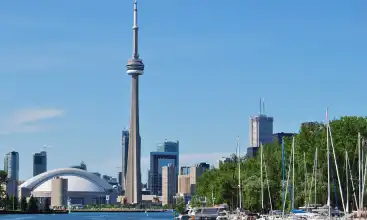
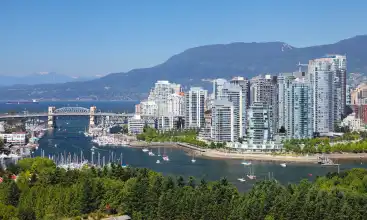
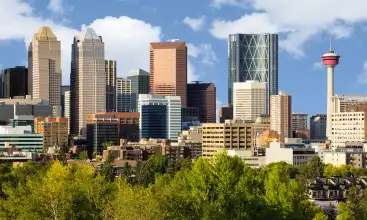

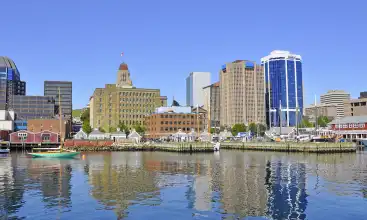
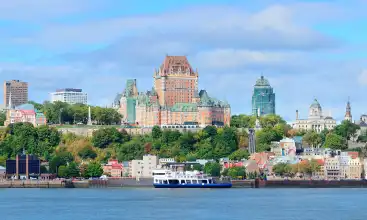
Popular rental locations in Canada
-
Car Rental Toronto Pearson International AirportFrom
€ 12 /day -
Car Rental Calgary International AirportFrom
€ 15 /day -
Car Rental Vancouver International AirportFrom
€ 18 /day -
Car Rental Montreal Trudeau AirportFrom
€ 16 /day -
Car Rental Toronto Union Station
-
Car Rental Halifax International AirportFrom
€ 24 /day -
Car Rental Kelowna AirportFrom
€ 23 /day -
Car Rental Quebec Jean Lesage AirportFrom
€ 23 /day
Useful tips for a well-prepared trip
Which insurance should I choose, and what's the deal with the deposit? Read our articles with useful information and tips to ensure you choose the right rental car for you.
Car rental locations in Canada
EasyTerra Car Rental compares rental car prices at the following destinations

Location information for Canada
Canada is best explored by rental car. EasyTerra Car Rental has over 322 pick-up locations in Canada. This means there is always a pick-up location close to your destination.
Most popular car hire locations in Canada
Introduction
This country in the northern part of North-America is known for its beautiful and diverse nature. Niagara Falls is one of the world's largest and best-known waterfalls. Canada also has many rivers, sweet water lakes, glaciers and magnificent mountains. Probably the best-known mountain range of Canada is the 'Rocky Mountains'. This mountain range covers an area of over 4800 km. The national and provincial parks of Canada are also well worth a visit, and in the west there are breathtaking sandy beaches surrounded by thick rain forests.
History
Originally, Canada is the land of the Eskimos (Inuit) and the Indians. Many Indian tribes were hunters and lived on the endless prairies. The Indians who made a living from agriculture lived in what is now known as South-Ontario. They were the first to come into contact with European explorers. Some four hundred years ago, the English and French came to Canada and settled in different parts of the country. Since that time, immigrants from all over the world came to Canada. Especially in the years after the Second World War, many Dutch immigrants moved to Canada. As a result, Canada has a varied history. The different population groups lived in separation and developed independently.
Society and Culture
Canada is a country of immigrants. Most Canadians are indeed immigrants. Many of them originally came from Europe, although over the years many Asians moved to Canada as well. Only a small percentage of Canadians (about 4%) belongs to the original inhabitants. Thanks to the immigrants Canada is known as a multi-cultural society.
Canada is a bilingual country: both English and French are spoken. In the province of Quebec, French is the official language, which makes it the exception. Outside of Quebec, few people consider French their native language. More than half of all Canadians (some 63%) consider English their mother tongue.
Canada does not have an official religion. About half of the Canadians are Roman-Catholic, and there are also groups of Protestants and people without religion.
Political situation
Canada is a parliamentary monarchy. The head of the monarchy is Queen Elizabeth II. It is only since 1982 that the British parliament no longer has a political influence in Canada. Canada is now completely independent. Canada has ten provinces and three territories. Like in The Netherlands the provincial government is democratically elected. The same goes for the national government. The party with the most votes forms the government. Since February, 2006, the Conservatives are in government. Stephen Harper is the current prime minister.
Economy
It is not only in terms of its surface that Canada is one of the biggest countries in the world. It is also one of the world's biggest economies. The standard of life is high and the population is highly educated. Canada's economy is focused predominantly on export. There is a great deal of demand for Canadian products and services. Most people work in the services sector. Also, many are active in industry and agriculture. Canada has geared its economy toward the United States, and export to its big neighbor is high. Furthermore, export to Europe, Asia and the rest of the world is growing continuously.
Canada's currency is the Canadian dollar. Every dollar is worth about 0.72 eurocents.
Geography and Climate
With a surface if nearly ten million square kilometers and a northern coastline of almost 24,000 kilometers Canada is the largest country in the Western hemisphere. The country borders on the Atlantic Ocean, the Pacific Ocean and the Northern Ice Sea. In central Canada we find extensive prairies.
Canada's population is not divided equally across the land. The northern part is the least populated, and most Canadians live in a strip along the southern border. The capital of Canada is Ottawa, a city with more than a million inhabitants.
Canada is a country with major climatic differences. In most months, the temperature in the north of the country does not reach above zero degrees Centigrade. Especially northern winters can be extremely cold. Temperatures can drop to a staggering minus 40 degrees Centigrade. A good winter coat is far from an excessive luxury! Fortunately, there are also parts of Canada with more pleasant temperatures. Especially in the south the summers can be warm and humid. The warmest areas of Canada are South-Ontario and British Columbia.
Traffic and Infrastructure
Needless to say, the enormous distances are easiest to cross by plane. There are various airline companies to transport all travelers to the various parts of the country as conveniently as possible. Canada's busiest airport is Toronto Pearson International Airport near Toronto, but also Montreal Airport and Vancouver Airport play an important role in processing International flights to and from Canada.
Other ways to travel around Canada are train or bus. Various railway lines cross beautiful stretches of nature, allowing passengers to enjoy the country more than they would from a plane. Traveling by train is about equally expensive as flying, but it allows you a better look at Canada's amazing countryside. Also, there are many bus companies that take care of regional transport. Large distances can be covered by 'Greyhound' bus. Buses offer a relatively cheap way to travel.
Finally, cars are very suitable for traveling around Canada. Canada has many beautiful nature areas that are not easy to reach by train or bus. The car offers you freedom and the ability to leave the main roads. This means that cars offer the best way to enjoy Canada's magnificent nature.
Food and drink
Canada's kitchen is as diverse as its nature and climate. Thanks to all the different cultures, a variety of dishes is on offer. In the coastal areas the focus tends to be on fish, while more inland meat is an indispensable ingredient. Of the many fish species there are in Canada, in many restaurants salmon is often favorite. Salmon is usually wild and is grilled (sometimes on charcoal). Furthermore, there are European influences in all major cities. For those who enjoy French cuisine, Quebec offers a variety of suitable restaurants.
The age at which people are allowed to buy and drink alcohol is 18. In some provinces it is even one year higher.
Time zones
Canada is divided into a number of time zones. Due to its enormous size, there are no fewer than six time zones. From East to West they are Newfoundland Time, Atlantic Time, Eastern Time, Central Time, Mountain Time and Pacific Time. The differences in time vary from 3.5 hours earlier (Newfoundland) to eight hours earlier (Pacific) compared to Greenwich Mean Time (GMT).
Accommodation
You won't have to worry about finding suitable accommodation in Canada. There are hotels in a wide range of prices, as well as bungalows and holiday centers. Also, there are enough youth hostels and campsites, making it possible to spend the night at a reasonable price. Finally, you can decide on a more rural stay at a farm, where you can savor Canada's more domestic side.
External Sources
For more information about Canada, in addition to Google we recommend the following sources:
- Wikipedia, Canada
- Canada Tourism (several languages)
Practical information
-
CurrencyCanadian dollar
-
Driving directionRight
-
City speed limit50 km/h
-
Freeway speed limit50 - 100 km/h
-
LanguageEnglish, French
-
Popular car categorySUV
What most people want to know
The following questions and answers are a selection of the most popular questions. If you do not find the answer to your question, have a look at the Frequently Asked Questions page or contact us.
- Enterprise
- Budget
- National Car Rental
- Alamo
- Avis
- Dollar Rent a Car
- Sixt
- Hertz
- Thrifty
- Discount
- Green Motion
- Europcar
- Carwiz rent a car
- NÜ Car Rentals
- Fox Rent A Car
- Keddy By Europcar
- Routes
- ACE Rent A Car
- Nextcar
- Economy Rent a Car
- Street Rent a Car
- Zezgo
- Right Cars
- Economy
- Peel
- ADA
- Rent a car
- Hawk Rent A Car
- Island Car Rentals
- U-Save Auto Rental
- Mex Rent a Car
- SurPrice car rentals
- Payless Car Rental


